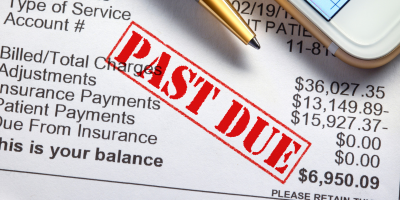Please note that this post contains affiliate links. These involve no extra cost to you, but may result in me receiving a small commission – for which I am very grateful! Learn more here.
After nearly four months of “extreme budgeting,” I’ve come to the realization that our budget has to have a miscellaneous category with a certain amount of money in it, for the sole purpose of flexibility for additional, unbudgeted expenses. Of course, our goal is to have all of the possible monthly and yearly expenses accounted for, however, sometimes we overlook the things that don’t come around very often. That said, I’d like to address what has become our biggest source of extra expense this spring (besides a tire blowing out on the car), and that is Elementary School expenses.
Tip: Grab my FREE Family Budget Workbook to help you accommodate school year expenses without destroying your financial goals. Find it HERE.
School Year Budget Survival Tactics
When we started, I made sure to budget enough each month to cover the back to school expenses in the fall, including school supplies, new clothing, and shoes. What I didn’t budget for, though, is every other activity, field trip, sport, concert, class party…you get the picture. Each month has a different school-related expense and, without a budget that encompasses these things, they can become a source of frustration.
Note: If your kids are younger than school age, I suggest you pay attention because trust me, they will be in school someday, and you will be responsible for these expenses. Start thinking about them now, and plan accordingly. If your kids are already graduated from high school and college, and you aren’t responsible for their expenses anymore (congratulations, by the way!), check out the list anyway, because the underlying concepts can be used through any stage of life. (And perhaps you will catch something I missed and be able to enlighten us in the comments below.)
Month by Month Expenses
Let’s start first by listing the likely monthly expenses you might have in elementary school. Feel free to add any to the list that I’ve missed because, seriously, we all know I’m not perfect. (If I was, I would have thought of this before I started my own budget.)
August and September
I’ve grouped these two months together because the back-to-school sales typically start at the beginning of August and go through September. These two months require but aren’t limited to, the following items: haircuts for the kids, back to school clothes/uniforms, school supplies, fall sports clothing and gear, enrollment fees, and books.
October
As far as holidays go, Halloween comes at the end of the month. I don’t know about you, but the cost involved with Halloween costumes, candy, and class party goodies, comes as a surprise to me each and every year. I think it’s because it’s at the end of the month, so at the start of October, I’m really not thinking about it. With this new list, it will be planned for, and won’t come as such a surprise in 2018.
November
This is when the weather starts to get a bit cooler. Depending on where you live, snow pants, coats, hats, mittens/gloves, scarves, and boots might be in order. In addition, long underwear and wool socks might need to be purchased. You may need to add these items in with October’s expenses if you live in an area that gets colder before November. I find that, in Eastern Washington, we can normally make it through October with fall jackets.
November is also a month that typically brings parent-teacher conferences, resulting in half days or days off and kids needing additional childcare if parents both work. Budgeting ahead of time for this childcare expense can keep everyone focused solely on your child’s school progress.
December
By now, if your kid is growing like mine does, they’ve outgrown their nice pants, shirts, and dress shoes just in time for you to need an all-black outfit for the Christmas concert. Thinking about this at the beginning of December, or budgeting for it throughout the year will keep concert day free from an emergency trip to the mall to outfit your child. Been there, done that.
The Christmas school party often requires a small gift for your child to bring for another student, some candy contribution, and perhaps paper products. Budget a small amount at the beginning of the month to cover these expenses. (I normally stick with about $10.) Also – don’t forget to purchase a card or small gift for your child’s teacher.
January
Without a doubt, going back to school after Christmas break comes not only with tears (on my part, of course!), it’s often accompanied by the need for replacement snow gear. Perhaps your kids are more responsible than mine, or maybe we actually have a black hole for mittens, hats, scarves, and even a boot occasionally. (Seriously, how does a kid lose only one boot? It still baffles me.) Needless to say, with no other major holidays, parties, or events in January, budget a little just in case this happens to your child. No one wants to spend the rest of the winter with no gloves.
February
Pink, red, hearts and flowers are everywhere this time of year, as are the thoughts of Valentine’s Day candy and cards. Of all the parties that take place throughout the school year, the Valentine’s Day party has the potential to be the most expensive. Not only should you budget for an entire class worth of cards and candy for the party, but you should also plan ahead – the closer you get to Valentine’s Day, the more expensive it all gets, and the less likely you are to find those Trolls cards your daughter has been begging for. Also, a little off topic but, did you budget for Valentine’s Day for your spouse? Just a thought.
March
The weather is slowly getting warmer and your kids are bound to be headed for Spring sports. After a long winter of destroying tennis shoes by wearing them in the snow (remember that lost boot?), it’s probably time to purchase a new pair, as well as any other clothing/gear necessary for the sport they have chosen. Additionally, it’s easy to forget that sports are often associated with fees, so budget accordingly. If it costs $100 for your daughter to be in the running club this spring, you shouldn’t be panicking on the due date trying to figure out where that money will come from.
April
Flowers and showers bring the need for warm weather clothing. Perhaps you live in an area that is still dealing with winter weather and, in that case, you might want to move this expense into May. For those of us living in areas that might be in the 70’s by this time of year, finding some low-cost clothing for your child to wear to school might be in order. Not to mention, by now they’ve likely outgrown or worn out most of their clothing from the fall. Don’t be caught off guard – plan ahead and this won’t be something you (and your budget) struggle with.
May
“It’s the most wonderful time…” Yes, indeed. That what I think of May, but my budget doesn’t always agree when the Spring concert is announced and, once again, my daughter is in need of new shoes, pants, shirt, etc. End of school parties are another expense and often come with the need for contributions in the way of food, utensils, and paper products. Plan ahead and the month of May really will be the most wonderful time of your year.
You can thank me later for the repeat of that line of the song through your head all day.
June/July
You know that “most wonderful time” I just got finished talking about, well June, July, and early August won’t be that without some careful planning. We normally consider the big ones: vacations, time off from work, and extra activities for the kids. Perhaps we’ve even budgeted for the increase in childcare (if you or your spouse isn’t home all summer).
What we frequently forget is the food increase that takes place in the summer. Your kids are no longer sitting at a desk all day, but rather expending energy, and need to be fed in larger quantities and more frequently. If your income is small enough that you are on reduced or free lunch at school, then you are adding the entire cost of breakfast and/or lunch to your summer budget. Planning ahead is so important because the last thing you want to do is get to the middle of the month and realize that your grocery budget has been used in entirety.
Year-Round Budget
With that, we roll back around to August – in what seems to be the never-ending saga of school-aged kids.
You probably want, as I do, elementary, middle, and high school experiences for your children to be memorable and fun, and they should be that for you as well. Rather than seeing the constant expense that comes with sending kids to school and letting them participate in activities, let’s focus on budgeting appropriately for the items throughout the entire year, so that participating in the school play, running for the track team, and playing in the Christmas concert, aren’t budget killers, but joy-filled experiences.
Create a fund (I talked about them HERE) specifically for these expenses and use it when it’s necessary. Allow yourself some grace, it won’t always be perfect, and there might not always be enough money to cover everything your child wants to do, but with this tool, you can say “yes” a lot more than you say “no”.
Tip: Grab my FREE Family Budget Workbook to help you accommodate school year expenses without destroying your financial goals. Find it HERE.
SaveSave
SaveSave



